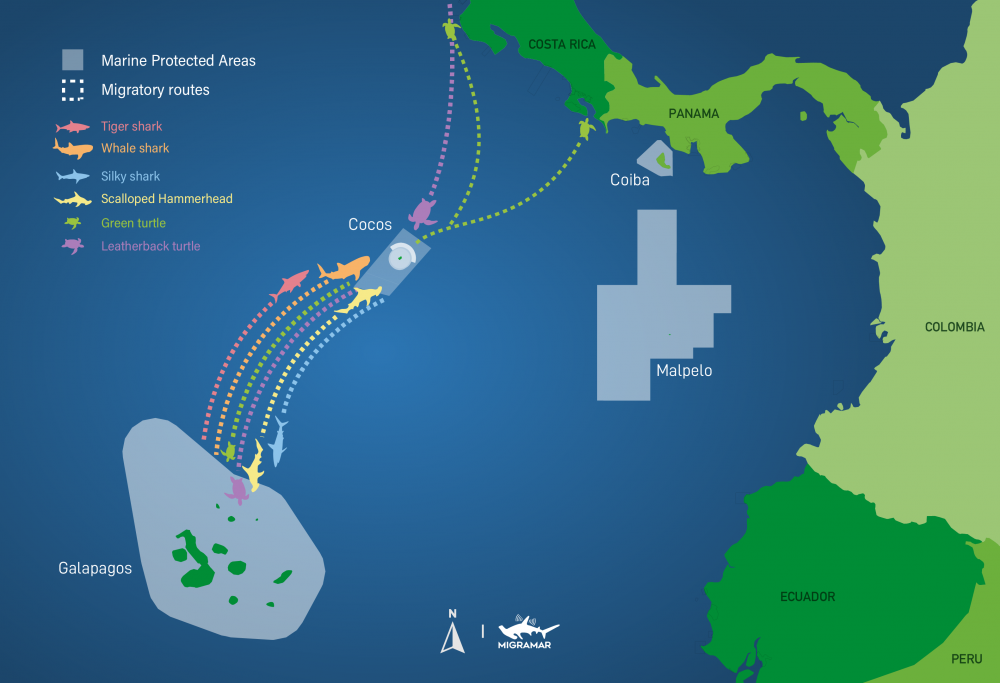
A New Marine Protected Area May Be On Its Way
Cocos Island off the Pacific coast of Costa Rica, and the Galapagos Islands off Ecuador, are important habitats for biological diversity, both on land and in the surrounding sea. Both have been designated as national parks by their respective governments and as World Heritage sites.
While both areas have received protection around the perimeters, scientists from MigraMar, a collaboration of researchers working on highly migratory species, have determined that a large swimway exists between the two areas that are used by sharks, including several endangered species such as the whale shark.
Endangered sea turtles also migrate along the Cocos-Galapagos Swimway, making protection of this ocean corridor a major priority for scientists and environmentalists.
When these migratory species leave the protected waters of Cocos and the Galapagos, they are subject to fishing impacts along the route. That is why the swimway must receive protection by eliminating commercial fishing activities that harm sharks and sea turtles.

Marine Protected Areas are for safeguarding ocean life. While fishermen often oppose the designation of such areas that limit or prohibit fishing, the protected areas act as reservoirs for healthy fish populations, often providing better fishing along the outside boundaries. We need protected areas where we can determine and measure any adverse impacts from fishing in unprotected areas.
Many species are being overfished, and sea turtles and sharks often end up as bycatch, being caught on hooks and in nets deployed for commercial fish species.
“We now know that in addition to endangered leatherback and green turtles, at least four species of endangered sharks also use this marine corridor. We urge the governments of Costa Rica and Ecuador to make history by creating the first bi-lateral marine protected area connecting two UNESCO World Heritage Sites,” said Todd Steiner, Executive Director of Turtle Island Restoration and the Cocos-Galapagos Mission Blue Hope Spot Champion (and former EII Sea Turtle Restoration Project Director).
The International Marine Mammal Project (IMMP) of Earth Island Institute supports the establishment of the swimway and seeks ways to enforce measures in such marine protected areas. For example, IMMP’s Dolphin Safe standards require tuna companies that are part of the program to strictly avoid fishing in marine protected areas around the world. Our dolphin safe standards also call for the live release of any sharks or sea turtles that are caught by tuna vessels.
What You Can Do:
You can help by signing the petition to the Presidents of Ecuador and Costa Rica, urging their action to protect the Cocos-Galapagos Swimway.
The International Marine Mammal Project of Earth Island Institute needs your support to protect marine life, including whales, dolphins, sharks, and sea turtles. There are many hazards in the oceans caused by humans. We need to address these impacts to help protect fragile marine species. Your donations are very much appreciated!
